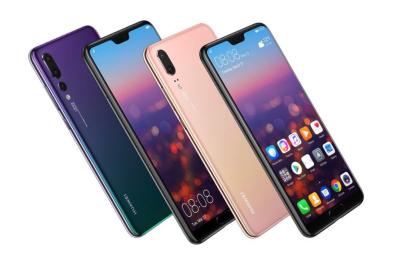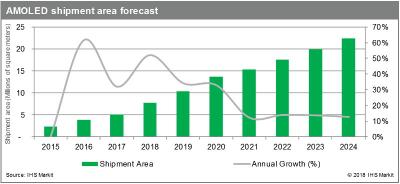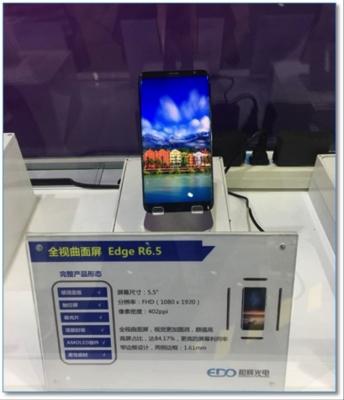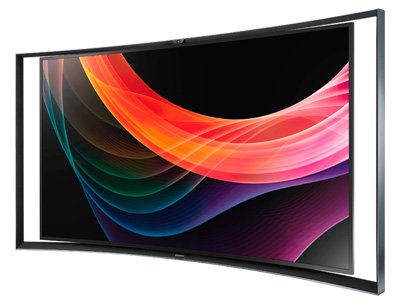DSCC lowers its OLED material revenue forecasts, published Samsung's latest OLED stack
DSCC lowered its OLED material revenue forecasts, saying that the market is expected to grow at a 25% CAGR from $773 million in 2017 to $2.35 billion in 2022 (down from its previous estimates of $2.56 billion in 2022). The fastest growing (51% CAGR) OLED application will be OLED lighting, which will grow from $12 million in 2017 to $95 million in 2022.
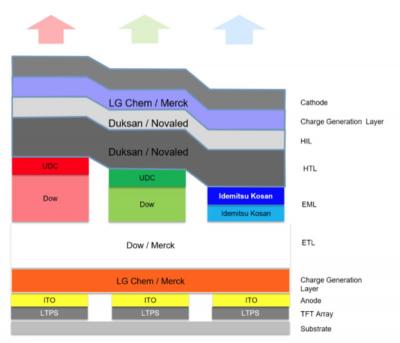
DSCC also published the material stack for Samsung's latest OLEDs (used in the Galaxy S9), which you can see above.


